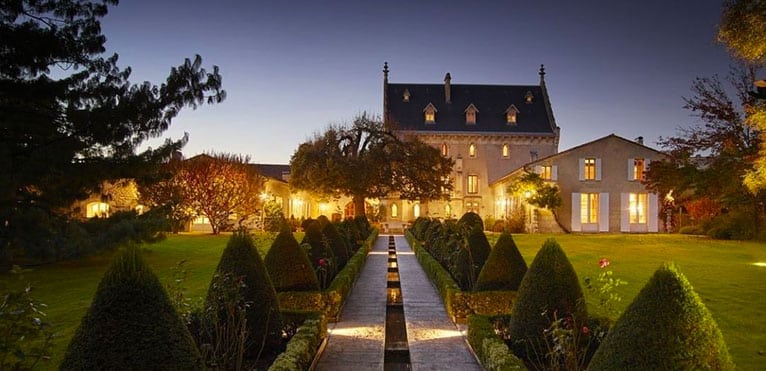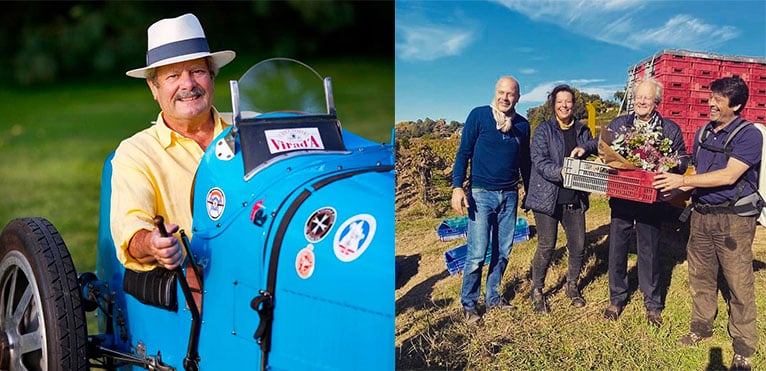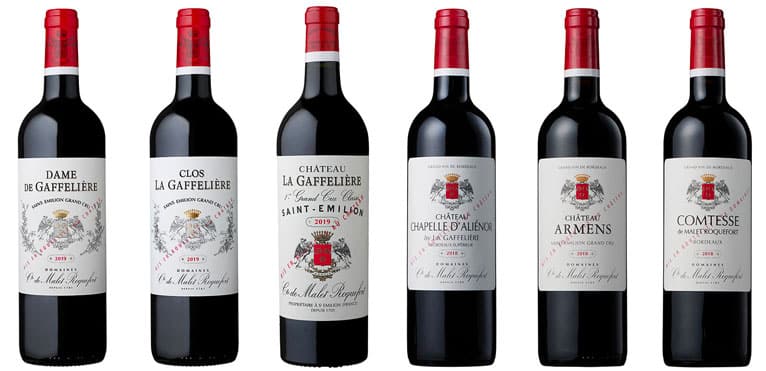
Contents
As the lanes of the D122 freeway narrow, a silhouette stands out on the horizon… Standing tall and majestic, Château La Gaffelière impresses all who cross its path. Nestled in a 38-hectare vineyard estate, it boasts the birthplace of the first Saint-Emilion grands crus. More than an architectural gem, Château La Gaffelière is a temple to the region’s winemaking expertise. Even today, under the name “Comte de Malet Roquefort”, exceptional wines are produced on these lands.
A domain that has stood the test of time
The first written traces of today’s Château La Gaffelière date back to Gallo-Roman times. Attracted by the splendor of the site, a wealthy merchant is said to have built a sumptuous villa here.
At that time, the estate was not yet known as Château La Gaffelière. It was only between the 11th and 15th centuries that this nickname came into use. And now you’re probably wondering about its origins… Is it a tribute to an illustrious philosopher who settled here? Is it a nod to a local delicacy? No way! The explanation lies with the beggars.
A leper colony once stood below Château La Gaffelière. To get around, the poor devils had no choice but to use a stick called a “gaffe”. The name of the château is derived from the latter.
Fortunately, the history of this domain has seen more glorious times.
After his heroic actions at the Battle of Hasting, Guillaume Malet is elevated to the rank of knight. In the process, he also became Earl of Suffolk. In 1654, one of his descendants married Marguerite de Calvimont, who inherited the feudal château de Roquefort. The Malet-Roquefort line was born!
In 1705, Louis II de Malet Roquefort married Isabeau de Bonneau de Fonroque. It was through this union that the Malet Roquefort family became owners of Château La Gaffelière. Since then, they have continued to develop the vineyard while producing an excellent wine for ageing.

A property in the Golden Triangle
Today, the estate from which Comte de Malet Roquefort wines are made comprises 38 hectares, 22 of which are classified as Grand Cru. Please note that plots can be divided into three zones:
- the asteriated limestone plateau: between two layers of limestone, layers of clay and green marl oxygenate the soil. Situated 90 metres above sea level, this geographical area is particularly popular with vines;
- south to south-west facing slopes: the advantage of this exposure is that the vines benefit from maximum sunshine and good drainage;
- the foot of the slope: healthy yet very fragile, these sandy soils require special attention to reveal the vine’s hidden aromas.

Wines that tell their own stories
On average, the vines growing on Château La Gaffelière soils are 35 years old. Mature to perfection, they produce Bordeaux wines with a racy, musky, slightly fruity character.
Because quality prevails over quality, the domaine limits its production to two exceptional wines.
First, Château La Gaffelière. Premier grand cru classé Saint-Emilion, this ruby-colored wine offers a flamboyant bouquet of blackcurrant, Asian spices and smoked meats.
Created in 1985, Clos La Gaffelière draws all its power from Merlot and Cabernet Franc. With its emphasis on authenticity, it’s an ode to the scents of the region’s terroir.
Photos: Domaines Comte de Malet Roquefort